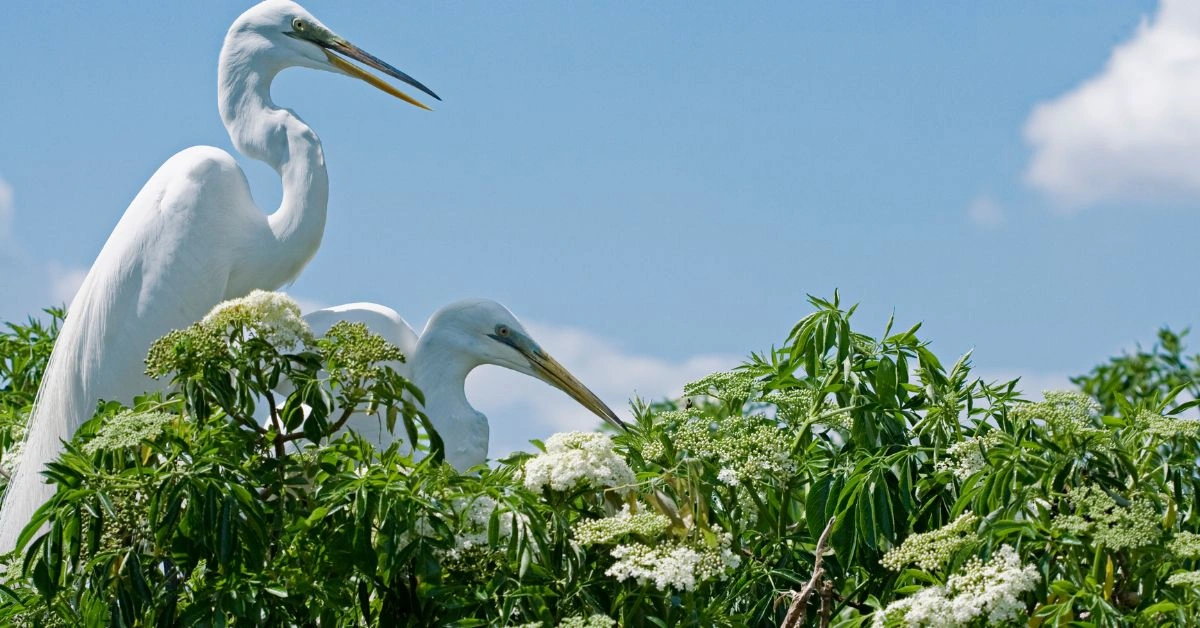Peiscans: The Unsung Heroes of Coastal Ecosystems
Peiscans are fascinating marine animals found in coastal habitats. Known for their unique physical adaptations and social behavior, these creatures play a crucial role in maintaining the balance of coastal ecosystems. Although not widely recognized, Peiscans are essential for the health of our oceans and their biodiversity.
These animals are vital to the functioning of the marine food chain. They help regulate fish populations, improve water quality, and support coastal biodiversity. Without them, the delicate balance of the coastal food web would be disrupted, affecting other marine life.
Peiscans have evolved to thrive in dynamic marine environments. Their ability to adapt to varying water temperatures, salinity levels, and food availability makes them resilient. This adaptability allows them to play a key role in the overall ecosystem.
Unlike many solitary marine species, Peiscans live in groups. Their social structure is vital for their survival, helping them communicate, hunt, and protect each other. These interactions are an essential part of their behavior and environmental role.
Research on Peiscans highlights their importance in maintaining ecosystem balance. By regulating populations of smaller fish and invertebrates, they contribute to the overall health of coastal waters. However, these animals face numerous threats that endanger their populations.
In this blog post, we will explore Peiscans’ unique features, social behavior, and vital role in marine ecosystems. We’ll also look at the challenges they face, including pollution, climate change, and habitat destruction, and how we can help protect them for future generations.
| Aspect | Facts | Figures |
|---|
| Habitat | Coastal marine environments, adaptable to varying water conditions | Found in diverse coastal regions worldwide |
| Physical Adaptations | Streamlined body, flexible fins, camouflage abilities | Speed: Up to 30 km/h, Adaptation range: 5°C – 30°C |
| Feeding Habits | Uses teamwork to hunt fish and marine organisms, employs suction feeding and sharp teeth | Can consume 10-15% of body weight in food per day |
| Social Structure | Lives in groups (pods), communicates through clicks and whistles | Group size: 5-50 members |
| Sensory Abilities | Excellent vision in murky waters, sound-based communication | Detects prey up to 50 meters away |
| Migration Patterns | Seasonal movement in search of food and breeding grounds | Can migrate over 1,000 km annually |
| Role in Ecosystem | Controls fish populations, improves water quality, supports biodiversity | Regulates populations of 10+ species in its habitat |
| Threats | Pollution, climate change, habitat destruction, overfishing | Global population decline: 20-30% in the last two decades |
| Conservation Efforts | Marine protected areas (MPAs), research on migration and behavior | 100+ MPAs established for protection |
| Human Impact & Solutions | Reducing plastic waste, sustainable fishing, supporting conservation organizations | 50% reduction in plastic pollution needed for marine health |
Physical Adaptations and Unique Features
Peiscans have evolved specific features that help them survive in coastal ecosystems. These adaptations allow them to move efficiently, find food, and communicate with others. Their physical traits play a critical role in their survival and their place in the marine food chain.
Body Structure and Movement
The streamlined bodies of Peiscans enable them to glide through water with ease. Their flexible fins allow them to make sharp turns, essential for escaping predators and catching prey. Speed and agility are crucial in their daily activities.
Some Peiscans have unique skin patterns that help them blend into their surroundings. This camouflage protects them from larger predators. Additionally, their coloration adapts to different water conditions, making them harder to spot.
Feeding Adaptations
Peiscans have specialized mouths for different feeding strategies. Some species have sharp teeth to catch fish, while others use suction-like mouths to feed on small marine organisms. Their feeding habits are essential for maintaining balance in coastal ecosystems.
Many Peiscans hunt in groups, using coordinated strategies to catch their prey. By working together, they trap schools of fish or other marine creatures, making them more efficient predators. Their teamwork ensures a stable food chain within their environment.
Sensory Abilities
Peiscans are highly attuned to their surroundings. Their excellent vision allows them to detect movement from a distance, even in murky waters. This ability is essential for spotting prey and avoiding potential threats.
Along with their keen eyesight, Peiscans communicate using sounds. They produce clicks and whistles to relay messages, whether for coordinating hunts or warning others of danger. These vocalizations are an important part of their social structure.
Adaptations to Changing Water Conditions
Peiscans can survive in a wide range of water conditions, from different temperatures to varying salinity levels. This adaptability is crucial in coastal habitats where conditions can change rapidly.
Their bodies are designed to handle different environments. Some species have a thick outer layer that helps them survive in colder waters or protect themselves from dehydration in warmer climates. These adaptations make them resilient in coastal ecosystems.
The physical features of Peiscans are key to their survival. These adaptations allow them to thrive in their coastal habitats and maintain their role within the marine food web.
Social Behavior and Ecology
Peiscans are social creatures that depend on group dynamics for survival. Their interactions with each other and other marine species play a vital role in maintaining the balance of coastal ecosystems.
Group Dynamics and Communication
Peiscans live in groups, often referred to as pods. These groups help them avoid predators, find food, and navigate through coastal waters. Living in groups also makes them more resilient in the face of environmental challenges.
They communicate with each other through sounds and body movements. Some species use clicks, whistles, or vibrations to send signals. This communication helps coordinate hunting efforts and alerts the group to potential dangers.
Hunting and Feeding Strategies
As skilled hunters, Peiscans often work together to catch prey. They use various strategies to trap fish and other marine organisms, such as creating bubble nets or swimming in coordinated patterns. This teamwork allows them to capture food more effectively.
Different species have unique feeding habits. Some chase schools of fish, while others search for food along the seafloor. This variety in feeding behavior helps regulate marine populations and supports the overall ecosystem.
Interaction with Other Marine Life
Peiscans share their habitat with many other marine species, from fish to seabirds. They play a role in regulating populations of smaller fish and invertebrates, preventing overpopulation and promoting biodiversity.
By feeding on smaller marine life, they help control fish populations, which in turn keeps the coastal ecosystem in balance. They also compete with invasive species for food, preventing non-native species from disrupting the ecosystem.
Some species even have symbiotic relationships with other marine animals, benefiting from mutual interactions. Peiscans’ presence in coastal habitats promotes ecological stability and diversity.
Migration and Seasonal Behavior
Peiscans are known for their seasonal migration patterns, often moving to new areas in search of food or better breeding conditions. These migrations are crucial for maintaining healthy populations.
During breeding seasons, Peiscans gather in large numbers to mate. These gatherings help ensure genetic diversity within their populations. After mating, many return to their usual habitats, continuing their role in coastal ecosystems.
However, climate change and human activity are disrupting migration patterns. Changing ocean temperatures and coastal habitat destruction make it harder for Peiscans to find food and breeding grounds. Protecting their migratory routes is essential for their survival.
Role in Coastal Ecosystems
Peiscans are essential to the health of coastal ecosystems. They regulate marine populations, improve water quality, and support biodiversity, all of which contribute to a balanced marine environment.
Maintaining the Food Chain
As predators, Peiscans play a critical role in maintaining the balance of the marine food chain. By feeding on smaller fish and marine organisms, they prevent overpopulation and keep prey species in check.
At the same time, larger predators, such as sharks and marine mammals, rely on Peiscans as a food source. This creates a balanced cycle of life, where every species contributes to the health of the ecosystem.
Controlling Marine Populations
Peiscans help regulate marine populations by feeding on smaller species. This prevents overgrazing of marine plants and ensures that the ecosystem remains balanced.
They also compete with invasive species, which helps protect native marine life. Without Peiscans, invasive species could spread unchecked, causing significant harm to local ecosystems.
Improving Water Quality
Peiscans help maintain water quality in coastal areas. Their movements stir up the seafloor, releasing nutrients into the water that support plankton and other microorganisms. This nutrient cycle is vital for ocean health.
Healthy plankton populations are essential for oxygen production and food for many marine species. By promoting plankton growth, Peiscans indirectly support the entire marine food web.
Supporting Coastal Biodiversity
The presence of Peiscans enhances the biodiversity of coastal habitats. Their interactions with other species help create a thriving and diverse ecosystem. Peiscans’ ability to support various species contributes to a healthy marine environment.
Coastal regions with healthy Peiscan populations tend to have more diverse marine life. Protecting these animals means protecting the broader coastal ecosystem.
Conservation Challenges and How We Can Help
Peiscans face numerous threats that jeopardize their survival. Pollution, climate change, and habitat destruction are some of the biggest challenges they encounter.
Threats from Pollution
Pollution is one of the greatest threats to Peiscans and other marine animals. Plastic waste, oil spills, and chemical pollutants harm their health and disrupt their habitat. These pollutants can affect their food sources and even cause death.
Noise pollution from ships and industrial activities also disturbs their communication and hunting. It interferes with their ability to detect threats and coordinate group activities.
Impact of Climate Change
Rising ocean temperatures and changing sea levels are disrupting Peiscans’ habitats. Warmer waters reduce the availability of their food, forcing them to migrate to new areas.
Increased storm activity and extreme weather events can damage coastal ecosystems, making it harder for Peiscans to find safe breeding areas. Climate change poses a growing threat to their survival.
Habitat Destruction
Human activities such as coastal development and overfishing are destroying the habitats of Peiscans. These changes reduce their access to food, shelter, and breeding grounds.
The destruction of coral reefs and coastal habitats further threatens their survival. Protecting these habitats is essential for ensuring Peiscans can continue to thrive in the future.
Conservation Efforts
Several conservation initiatives are underway to protect Peiscans and other marine species. Scientists are studying their migration patterns and social behavior to develop better protection strategies.
Marine protected areas (MPAs) have been established to safeguard their habitats from human interference. Expanding these areas and enforcing stricter fishing regulations can help Peiscans recover.
How We Can Help
Individuals can make a difference by reducing plastic waste, supporting sustainable fishing practices, and spreading awareness about marine conservation. Every small action helps reduce pollution and protect Peiscans’ habitats.
Supporting organizations that focus on ocean conservation is another effective way to contribute. Together, we can make a significant impact on protecting these incredible creatures and ensuring the health of our coastal ecosystems.
Conclusion
In conclusion, these remarkable marine creatures are indispensable to the health of our coastal ecosystems. Their unique physical adaptations, social behaviors, and role in regulating marine populations ensure the balance of marine life. They play an essential part in maintaining the food chain, controlling fish populations, and improving water quality, all while supporting coastal biodiversity. However, they face numerous challenges, from pollution and climate change to habitat destruction. To protect these vital creatures, it is crucial that we support conservation efforts, adopt sustainable practices, and raise awareness about the threats they face. By taking action, we can help ensure that future generations experience the thriving ecosystems that depend on these marine animals.
FAQs
What role do these marine creatures play in coastal ecosystems?
These animals regulate fish populations, improve water quality, and support biodiversity. Their presence helps maintain the balance of the marine food chain, which is essential for the health of coastal ecosystems.
How do these creatures adapt to changing environmental conditions?
These animals are highly adaptable, capable of surviving in varying water temperatures, salinity levels, and changing food availability. Their physical features, like specialized skin patterns and thick outer layers, help them thrive in diverse coastal habitats.
Why are social behaviors important for their survival?
Social behaviors, such as living in groups and communicating through sounds and body movements, are vital for survival. These interactions allow them to hunt more efficiently, avoid predators, and ensure their safety within their habitats.
How does pollution affect these creatures?
Pollution, including plastic waste and chemical contaminants, harms their health and disrupts their habitats. Noise pollution can interfere with their communication, making it difficult for them to coordinate activities or detect threats.
What are the primary threats to their survival?
The main threats include pollution, climate change, and habitat destruction. Rising ocean temperatures, coastal development, and overfishing all contribute to the decline of their populations and the degradation of their habitats.
What can we do to protect them?
Reducing plastic waste, supporting sustainable fishing practices, and spreading awareness about marine conservation are essential actions. Additionally, supporting marine protected areas and conservation organizations can help ensure the long-term survival of these marine creatures.
What is being done to conserve their populations?
Conservation efforts include the establishment of marine protected areas, research into migration patterns and social behaviors, and stricter regulations on fishing. These measures aim to protect their habitats and promote sustainable practices for their survival.







